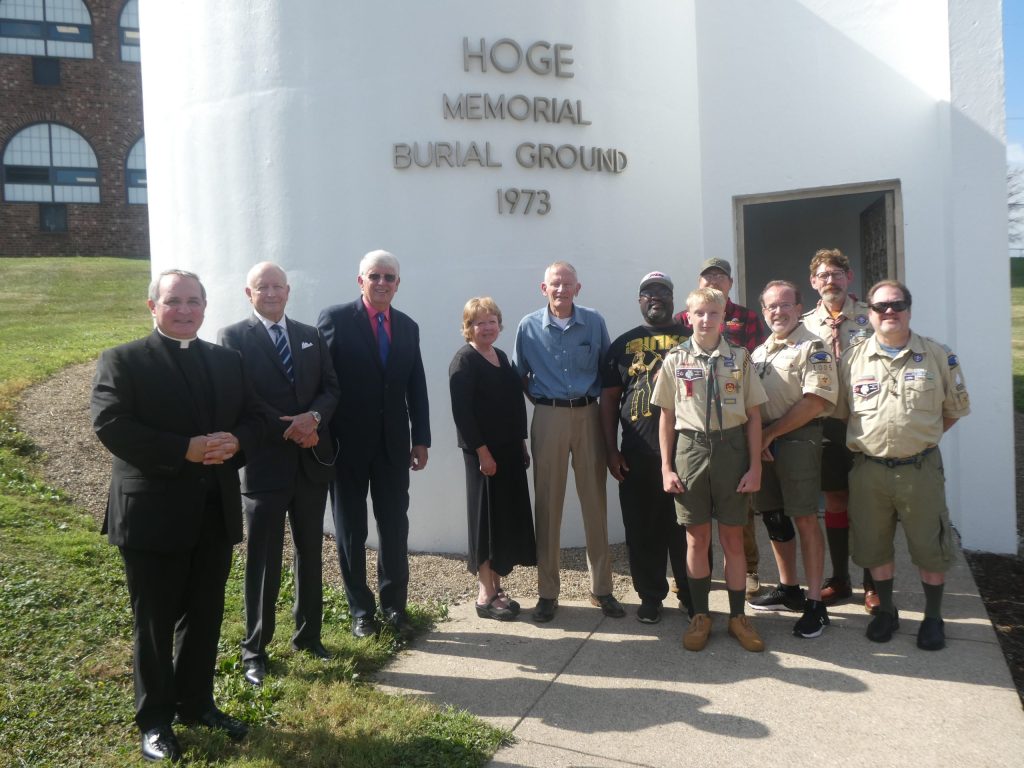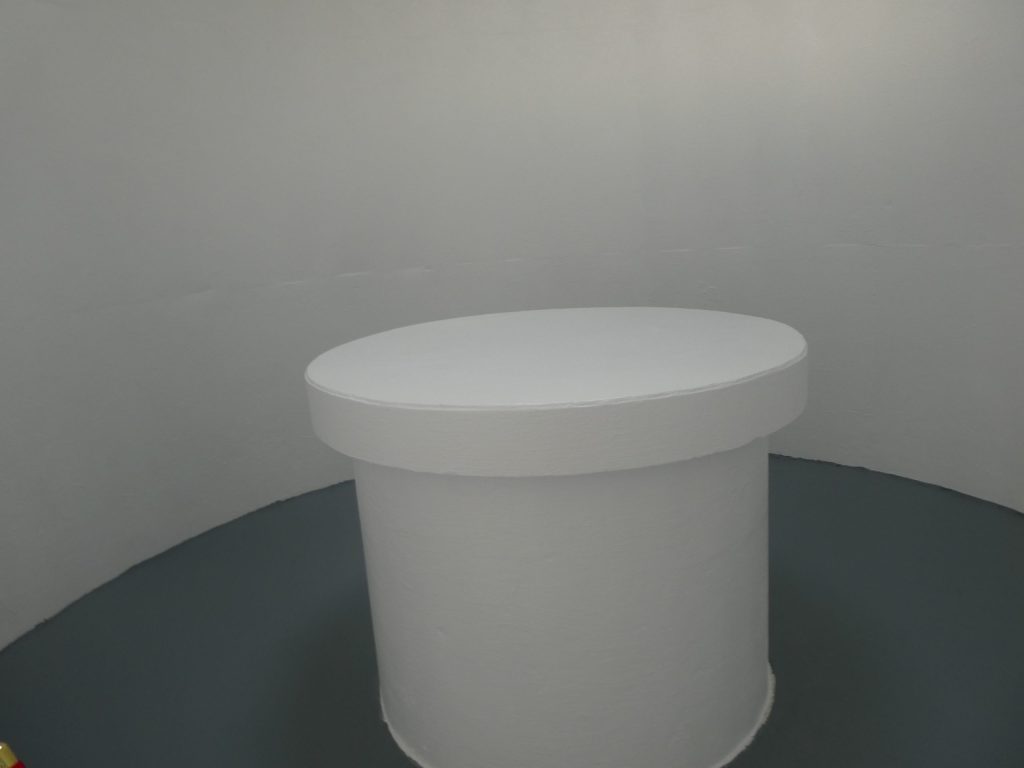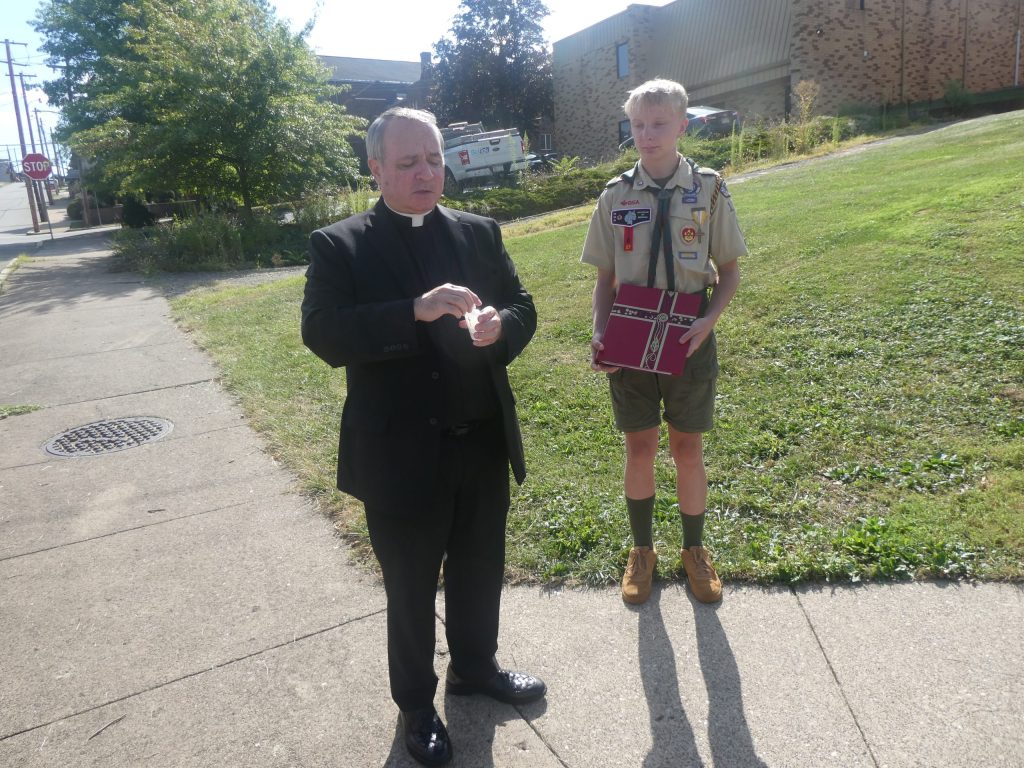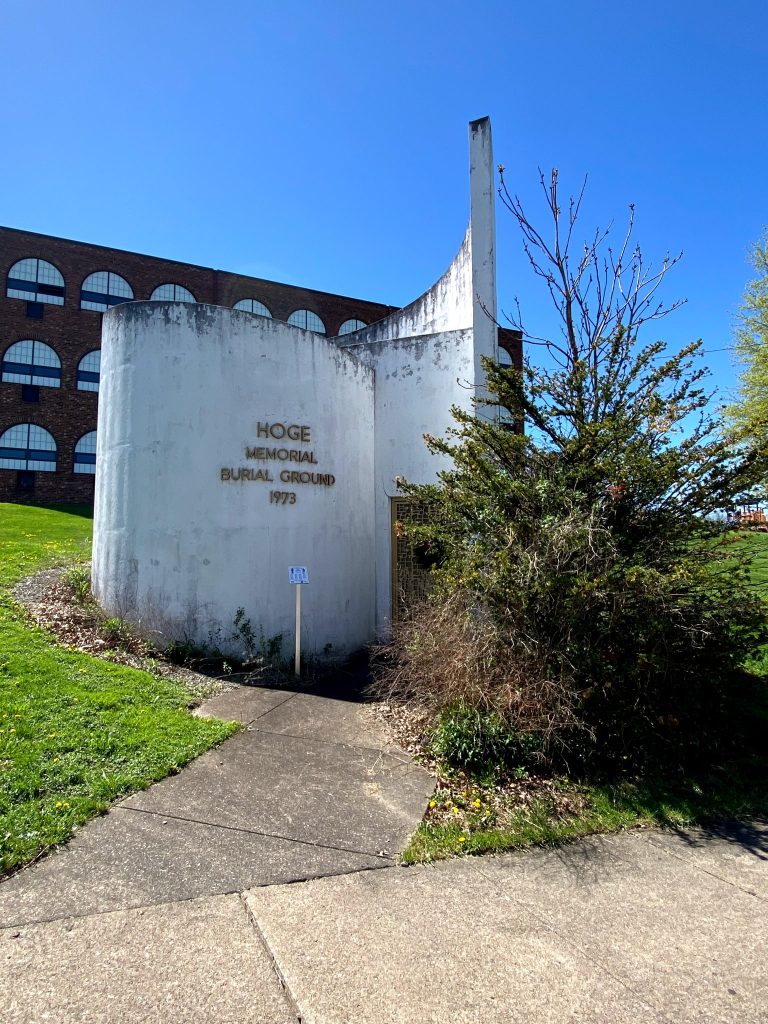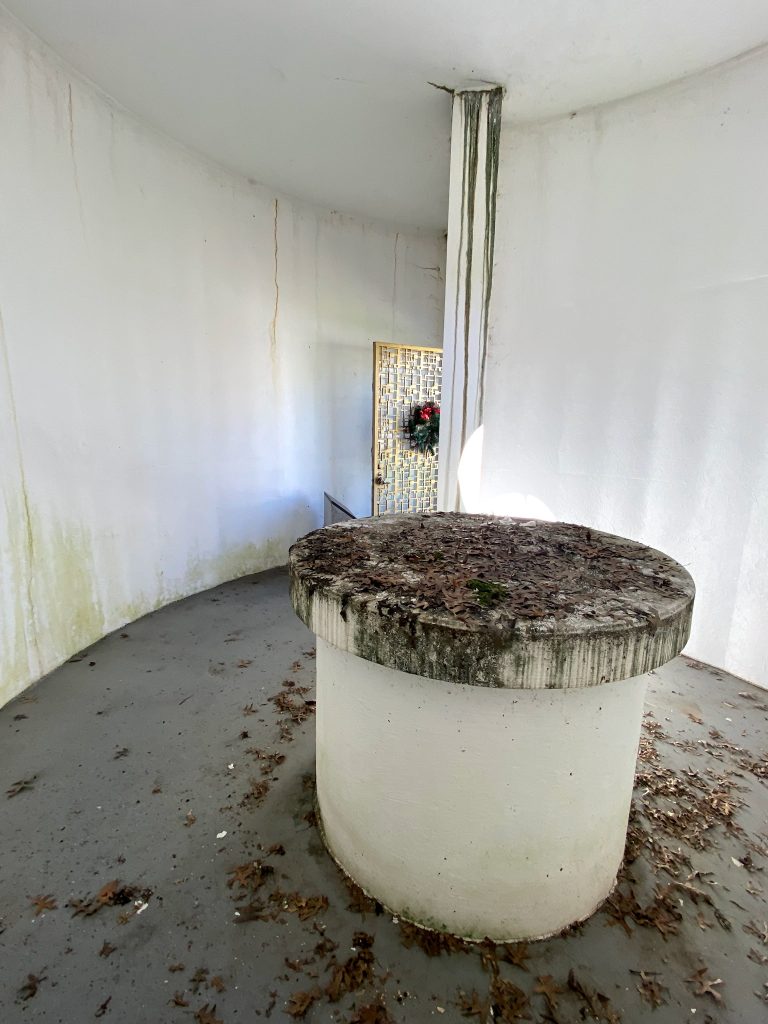Washington teen restores Hoge Memorial for Eagle Scout project
When Alex Weaver’s Boy Scout troop leader asked if anyone was interested in restoring the Hoge Memorial in Washington, the youth accepted the challenge.
“I took it, but didn’t expect it to be as much work as it was, but it was doable,” said Weaver, a Scout in Troop 1005 in Washington, which is chartered by St. Michael Byzantine Church in Canonsburg.
Weaver, 14, of Washington, earned his Eagle Scout badge with a project that involved more than 250 hours of volunteer work, with help from about 20 people including fellow Scouts, Scout leaders, friends and family members. Funding came from various sources, including the Hoge family and a GoFundMe account. Some businesses provided discounts on supplies or donated them for free.
His work was recognized Friday at a rededication ceremony at the memorial located on West Walnut Street behind John F. Kennedy Catholic School.
“The city was all on board for a positive young man doing something positive here in the city of Washington,” said Mayor JoJo Burgess. “This stretch of Walnut has been notorious for some bad things happening, so it’s good to have something good happen here, and it’s one of our youth that’s doing it. We had a young man lead a crew of people to do something special in the community. These are the positive things we like to highlight in the community.”
Weaver, a freshman at Seton-LaSalle High School, explained the scope of work that needed to be done for the restoration project, which began in late June. The entire structure was cleaned and peeling paint removed. The memorial was primed, sealed and repainted. Overgrown and dead plants obstructing the memorial were removed, topsoil was added, the skylight was replaced, new gravel was put down, cracks in the roof were sealed, and the roof was cleared of rocks and debris.
“We took about 10 or 20 pounds of rocks off of there,” Weaver said. “There’s no reason for there to be rocks up there, but we took them off and spread them around, made it look real nice.”
The memorial is built on what was the first community graveyard in Washington. The first interment there was in 1795, and 331 bodies were buried there. Forty-nine Revolutionary War soldiers were initially buried there.
The cemetery was named the Hoge Cemetery after William and John Hoge, both of whom served in the early U.S. Congress. They laid out their initial plans for Washington and personally donated land to the city and Catholic Church. They also donated the land where the courthouse is located to the county.
In the 1950s and ’60s, many families relocated their loved ones from the Hoge Cemetery to others in the area. In 1963, the city sold the cemetery land to Immaculate Conception Church to build what is now John F. Kennedy Elementary School.
The city used eminent domain to take a portion of the land for the memorial. The remains of a few individuals still interred on the land were placed in a burial cylinder in the memorial when it was constructed. Construction was completed in 1973.
Four descendants of the Hoge family were in attendance Friday – Garrett Hoge, Lynne Hoge Glessner, Paul Hoge and Morgan Hoge.
“Alex did a great job,” Garrett Hoge said. “I want to congratulate him on all the research and planning that he did. I think he knew more about the memorial than I did. This brings that history to life.”
“It looks wonderful,” Hoge Glessner added.
Jim Weaver, Alex’s father, admitted feeling proud of what his son accomplished.
“The building needed a lot of work,” he said. “You couldn’t see half of it because of the plants.
“I think Alex gets from me that there is no challenge that can’t be taken on. It’s been a learning process all along. He’s done a really good job of planning this and asking for help when he needed help. He’s learned a lot of lessons through this. For it to look the way it does today is amazing.”
Weaver, who attended JFK School, admitted feeling relief now that the majority of the work is completed. He will place a sign at the site explaining what was done.
“There was definitely a point in this where I didn’t feel it could be done, but it is now,” he admitted.


